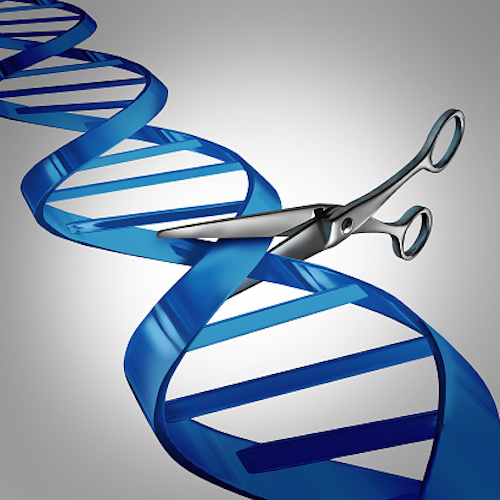
Researchers have identified a compact version of a gene-editing protein that is small enough to fit into adeno-associated viruses (AAVs) and can be modified to deliver highly efficient, targeted therapy to cells.
The relatively small version of the CRISPR-associated protein Cas12a occurs naturally in the Erysipelotrichia class of bacteria and is named EbCas12a.
Its size enables Cas12a together with its CRISPR (cr)RNA to fit into the non-pathogenic viruses that are commonly used to deliver gene therapy, when they might otherwise be too large.
The researchers further added a point mutation to create a high-activity variant of the protein, which they term enhanced (en)EbCas12a.
Taken together, enEbCas12a provides a promising genome-editing tool and a powerful platform for AAV gene therapy,” reported Hongjian Wang, PhD, from Wuhan University, and colleagues in the journal PLOS Biology.
CRISPR is a naturally occurring system used by bacteria to recognise and defend themselves against invading viruses. It has been adapted as a genetic editing tool, with CRISPR-associated Cas proteins used as molecular scissors to cut genetic code.
Template DNA can then be delivered to repair a defective gene or insert a new one, with the system showing potential for correcting genetic diseases such as sickle-cell anemia and cystic fibrosis.
AAVs have already been successfully deployed in clinical trials to deliver gene therapy and, unlike plasmid DNA and ribonucleoproteins that may be degraded in vivo after a few days, the delivery system results in long-lasting presence of the delivered genetic material.
However, AAVs have a small packaging capacity of 4.7 kb or less, limiting their clinical applications for the CRISPR/Cas system of gene delivery. In particular, Cas12a is too large to be encapsulated with crRNA.
“To adopt Cas12a in AAV gene therapy, the small Cas12as that can be packaged with its crRNA into a single AAV are urgently needed,” the researchers maintain.
In a series of experiments, they found that the compact EbCas12a protein possessed DNA cleavage activity in vitro and also exhibited extensive gene-editing activities in mammalian cells.
The introduction of a key mutation (D141R) created enEbCas12a, which showed efficiency and fidelity in gene editing “making it an attractive candidate for therapeutic applications,” the authors note. enEbCas12a also had higher editing efficiency than wild-type EbCas12a.
The team then used AAV-enEbCas12a to target the PCSK9 gene in mice, which has previously been flagged as a therapeutic target to reduce blood cholesterol levels.
Thirty days after injection, serum cholesterol levels in six mice receiving AAV-enEbCas12a decreased significantly while those in six others receiving phosphate-buffered saline remained as normal.
The data confirm that enEbCas12a can be used as an effective genome-editing system in vivo through a single AAV delivery, stated Wang and co-workers.
“Because of its low off-target effects, Cas12a is very promising for future applications in disease treatment,” they noted.
Based on their findings, the team concludes that “enEbCas12a provides a promising genome-editing tool and a powerful platform for AAV gene therapy.”












